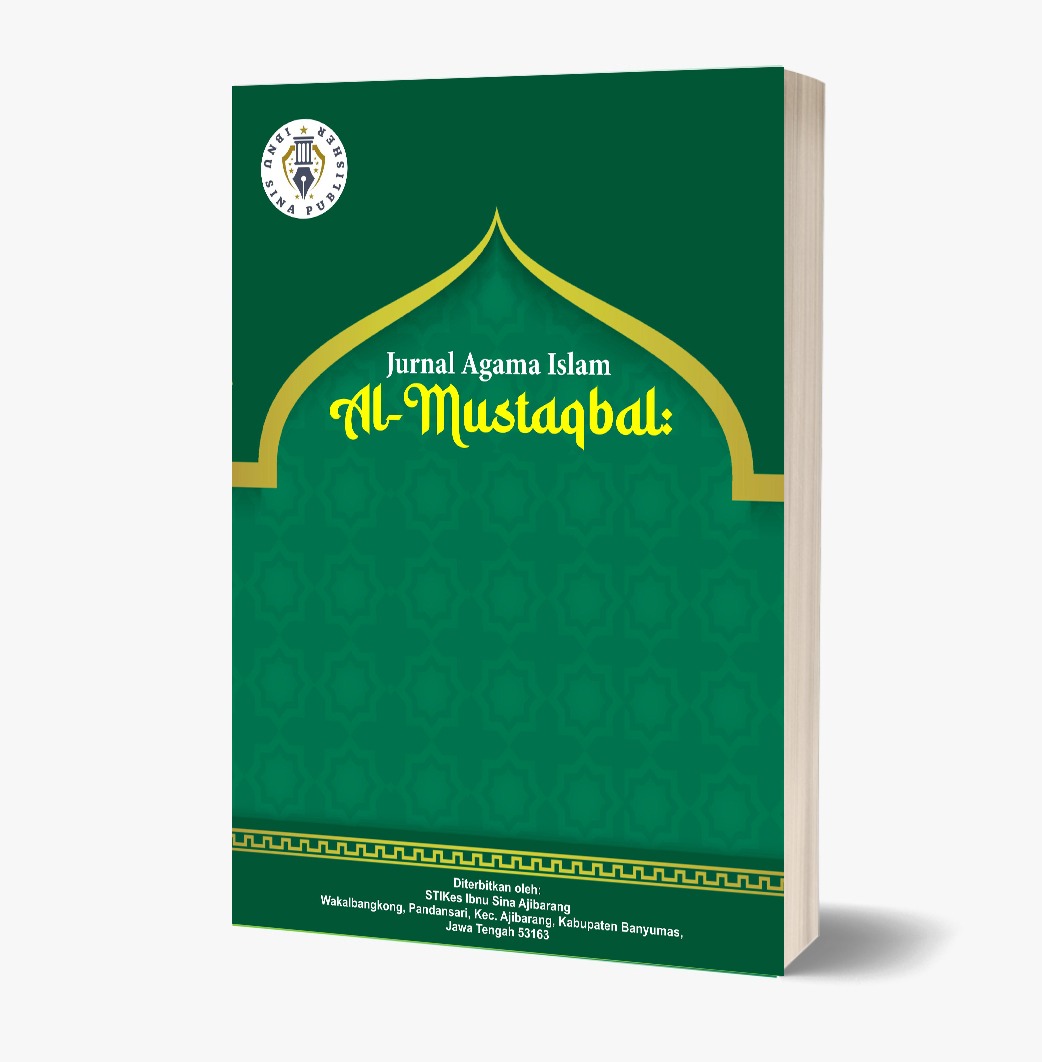Fenomena Alam dalam perspektif Hadis dan Sains Modern: Analisis Tematik terhadap Nilai Spritual Islam
DOI:
https://doi.org/10.59841/al-mustaqbal.v2i3.232Keywords:
Ecological awareness, Hadith, Modern science, Natural phenomena, Spiritual valuesAbstract
This study aims to analyze natural phenomena through an integrative approach combining the Hadiths of Prophet Muhammad (peace be upon him) and modern science, with a focus on the spiritual and ethical dimensions they contain. Natural events such as rain, lightning, wind, earthquakes, and eclipses are examined thematically by synthesizing scientific explanations and religious understanding based on authentic hadiths. The research adopts a qualitative-descriptive approach using content analysis of relevant hadith texts and contemporary scientific literature. The objective is to explore a deeper understanding of natural phenomena not merely as physical occurrences, but also as signs of Allah’s greatness that convey moral and spiritual messages for humankind. Findings indicate that the hadiths of the Prophet do not only instruct Muslims to respond to natural phenomena through acts of worship—such as supplication, remembrance (dhikr), or eclipse prayers—but also emphasize the human responsibility as stewards (khalifah) on Earth. The hadiths foster awareness of the interconnectedness between humans and the universe, framed within the concepts of monotheism (tawhid) and trust (amanah) to maintain environmental balance. The integration of hadith and science provides a new conceptual framework for developing spiritual-ecological awareness that balances scientific rationality with religious values. This approach is particularly relevant in the context of today’s global environmental crisis, which demands value-based solutions beyond technological innovations. Thus, this study not only enriches the Islamic intellectual tradition but also contributes to environmental preservation efforts through a religious ethical lens. It underlines the importance of fostering such integrative approaches in education, Islamic preaching (dakwah), and environmental policy. By doing so, a more holistic ecological awareness can be cultivated within Muslim communities. In conclusion, aligning scientific understanding with Islamic teachings through the hadith can serve as a meaningful foundation for both personal spiritual growth and collective environmental responsibility in facing the challenges of our time.
References
Abū ʿAbd Allāh, M. ibn I. I. al-Bukhārī al-Juʿfī. (n.d.). Ṣaḥīḥ al-Bukhārī (Vol. 2).
Ahmadsyah, M. (2023). Bentuk bencana perspektif hadis. Jurnal Institut Agama Islam Sumatera Barat, 1(2), 203-210.
Al-Attas, S. M. N. (2024). Islam, secularism, and the Muslim dilemma: A thematic review of Islam and secularism. Islam dan Sekularisme, 1(2), 347-354.
Al-Bayhaqī, A. B. A. ibn al-Ḥ. (n.d.). Syuʿab al-Īmān (Vol. 1).
Al-Qasṭallānī, A. A. A. ibn M. al-Shāfiʿī. (n.d.). Irshād al-Sārī li-sharḥ Ṣaḥīḥ al-Bukhārī.
Anas, M. ibn. (n.d.). Al-Muwaṭṭaʾ (Vol. 2).
An-Naysābūrī, A. al-Ḥ. M. ibn al-Ḥ. ibn M. al-Qushayrī. (n.d.). Ṣaḥīḥ Muslim (Vol. 8).
Atika, N., & Salminawati. (2022). Filsafat dan sains Islam tentang fenomena alam. Journal of Social Research, 1(5), 334-340. https://doi.org/10.55324/josr.v1i5.73
Fatnur, M. A., Abubakar, A., Irham, M., & Arbiyah, D. (2025). The process of rainfall from the perspective of Tafsir Ilmi by the Kemenag RI and science. Jurnal Tafsir dan Sains, 5(1), 1-9. https://doi.org/10.35877/soshum3477
Ibn Ḥibbān. (n.d.). Ṣaḥīḥ Ibn Ḥibbān: Al-Musnad aṣ-Ṣaḥīḥ ʿalā at-Taqāsīm wa al-Anwāʿ min ghayri wujūd qiṭʿin fī sanadihā wa lā thubūt jarḥin fī nāqilīhā (Vol. 3, p. 87).
Imamudin, M. (2001). Peranan air dalam perspektif Al-Qur'an (Air sebagai sumber kehidupan). el-Hayah, 3(1), 41-45. https://doi.org/10.18860/elha.v3i1.2220
Khairani, L., Merianti, & Desnita. (2024). Sains di balik fenomena petir dan solusi penangkal petir. Jurnal Pendidikan Tambusai, 8(2), 25658-25666.
Metrikasari, R., & Choiruddin, A. (2021). Pemodelan risiko gempa bumi di Pulau Sumatera menggunakan model inhomogeneous Neyman-Scott Cox Process. Jurnal Sains dan Seni ITS, 9(2). https://doi.org/10.12962/j23373520.v9i2.52318
Pangesti, A. M. D., Pradana, D. R., Qoyimah, F., Maharani, G. N. T., Azizah, N., Rahmati, P. D., Rizqa, R. N., Mouthia, S. P., & Nisa, W. (2023). Fenomena alam dalam perspektif ilmu sains dan ayat Al-Qur'an. Jurnal Religion: Jurnal Agama, Sosial, dan Budaya, 1(2), 158-167. https://maryamsejahtera.com/index.php/Religion/article/view/71
Putri, A. A., Sabilla, I. A., Fadhilah, S. A., & Aridansyah, V. (2025). Ilmu pengetahuan alam dan bidang 4 ilmu pengetahuan alam. Jurnal IPA Integratif, 3.
QS. Al-Baqarah. (n.d.). Al-Qur'an (Juz 1).
QS. Al-Imran. (n.d.). Al-Qur'an (Juz 4).
Sayful Mujab. (2014). Gerhana; Antara mitos, sains, dan Islam. Yudisia: Jurnal Pemikiran Hukum dan Hukum Islam, 5(1), 83-101.
Sihombing, R. A., Hutagalung, J. F., & Tambunan, J. B. (2023). Utilization of lightning energy as a lightning power plant to optimize lightning potential in Medan City. Al-Fiziya: Journal of Materials Science, Geophysics, Instrumentation and Theoretical Physics, 5(2), 87-94. https://doi.org/10.15408/fiziya.v5i2.25926
Ulfah, M. (2010). Memahami kehendak Allah melalui fenomena alam (Kajian tentang ayat-ayat kauniah). Retrieved from http://repository.uinjkt.ac.id/dspace/handle/123456789/3945
Ushuluddin, Fakultas, Universitas Islam Negeri, & Syarif Hidayatullah. (2024). Fungsi al-Riyāh dalam al-Qur'an (Studi Analisis Tafsir al-Jawāhir fī Tafsīr al-Qur'ān al-Karīm tentang fungsi angin).
Wahbah Az-Zuhaili. (2013). Terjemahan Tafsir al-Munir (Vol. 15, pp. 31-33).
Zakariyyā ibn M. ibn A. ibn Zakariyyā al-Anṣārī, Z. al-D. A. Y. al-Sunīkī al-Miṣrī al-Shāfiʿī. (n.d.). Minḥat al-Bārī bi-Sharḥ Ṣaḥīḥ al-Bukhārī al-Musammā Tuḥfat al-Bārī (Vol. 3).

















